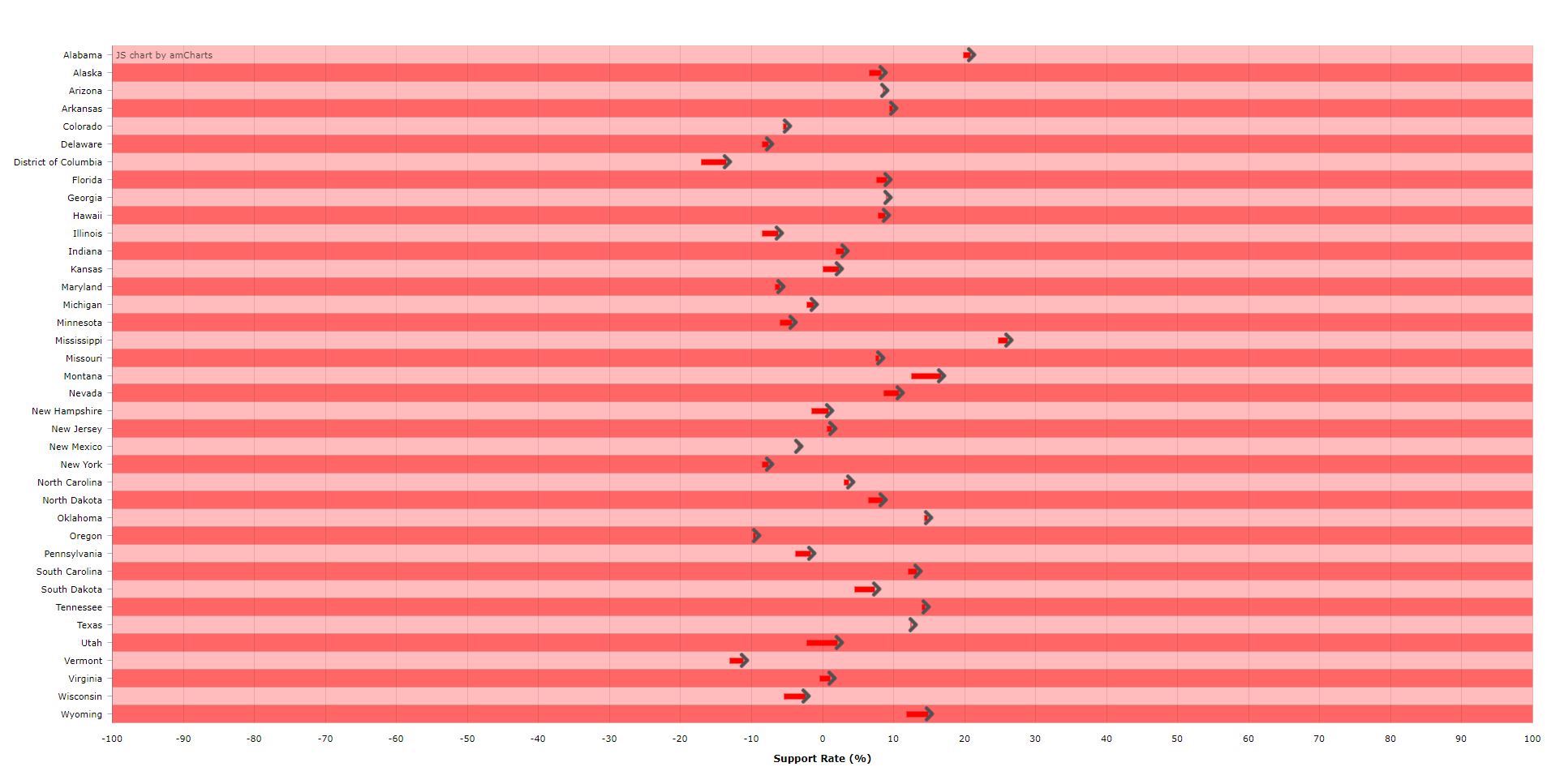The University of Texas Center for Identity TrustLab is monitoring social media to uncover trends and forecast outcomes for the 2020 Presidential Election. TrustLab mines social media data to glean insights regarding U.S. sentiment, beliefs, and plans to vote in the upcoming presidential election.
Are conversations forecasting the 2020 Presidential Election?
This UT CID project is asking if the volume and sentiment of ongoing conversations in social media can serve as trusted indicators of elections. Our investigations in the 2016 Presidential Election indicated they are. Here is what social media is saying now:
The charts below reflect data gathered from September 13 to October 10, 2020.
Click here to see the charts from 9/6 to 10/3
Who Is Winning?
Are People Changing Their Minds?
UT CID researchers monitor social media activity surrounding the upcoming election, to track the changes in support for the two presidential candidates in each respective state. The length of each arrow shows the amount of change observed in the past week. The direction of arrows imply the right and left of the political spectrum. States that are changing towards right/left are grouped together and shown as red/blue respectively.

How Does it Work?
The TrustLab Presidential Election Prediction monitors social media to take the pulse of the 2020 presidential election by measuring trust, volume, popularity, sentiment, and change.
What is the TrustLab
The UT CID TrustLab finds trusted data sources in social media to find the earliest and best dada for decision-support. Social media represents "the voice of the people", and as such can present an accurate snapshot of public sentiment. However, social media can also be noisy, as inaccurate information is shared, both intentionally and unintentionally. TrustLab uses a collection of UT TrustFilters to measure the reliability of sources, and to filter our misinformation and unwanted noise.
